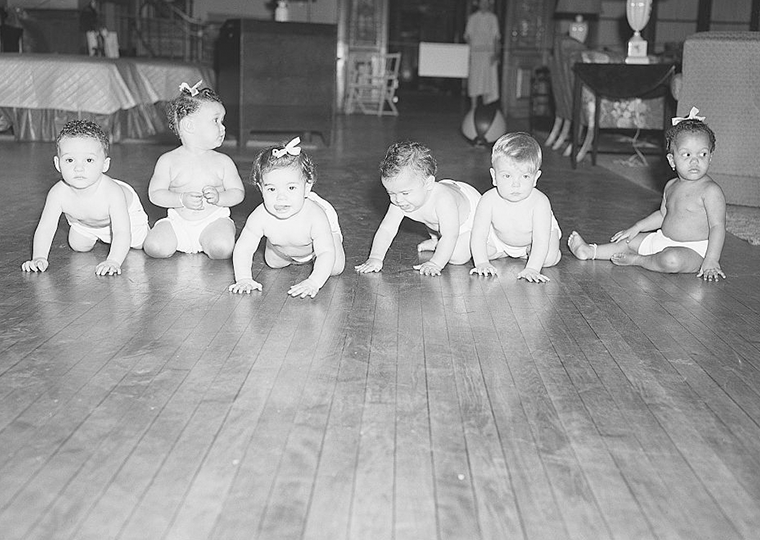In Northern cities, railroad tracks that defined Black neighborhoods remain boundaries against economic mobility
During the Great Migration of Black people from the South to the North, which began in the early 20th century, railroad tracks that created closed-off areas served as physical barriers to create segregated neighborhoods in many of the landing spots such as Chicago and Detroit. Research published in 2011 in the American Economic Journal made the case that railroads — one of the great economic leaps forward of the 19th century — continue to provide a framework for segregated cities.
Study author Elizabeth Ananat estimated that today’s neighborhoods that are still defined by a high level of such railroad-tracked segregation cause “cities to have Black populations with worse present-day characteristics, both at the top and the bottom of the education/income distribution.”
Segregation Not a Thing of the Past
A working paper by University of Texas at Austin’s Eric Chyn, UCLA Anderson’s Kareem Haggag and the Federal Reserve Bank of Philadelphia’s Bryan A. Stuart builds on Ananat’s “railroad division index” to advance a case for how segregation continues to impede intergenerational economic advancement, especially for Black children from poorer families. They link the level of RDI in 121 northern metro areas identified by Ananat with generational income data on parents and their grown children.
Chyn, Haggag and Stuart compare the average income of parents — based on nationwide percentile rank — with the IRS-reported income levels for their adult children (born between 1978 and 1983) at ages 31 to 37.
By using the RDI as a proxy for the level of segregation, the researchers are able to tease out the extent to which rearing children in a segregated community impacts the upward mobility of the next generation. They find that a child whose parents are extremely poor — the first percentile in pretax income — and whose family home is in an area that is more segregated leads to income rank being 4.5 percentile points lower than if the child had grown up in a less segregated area.
That translates to those children landing in the 22nd percentile for income as adults ($12,666 annual household income) rather than the 27th percentile ($17,500 household income).
In a back of the envelope estimate, the researchers suggest that if racial segregation disappeared, the Black child who makes it to the 27th percentile for income as an adult would instead make it all the way to the 50th percentile.
When parents are in the 25th income percentile, growing up in the more segregated area causes a 4 percentile point drop in the adult child’s eventual income rank. This negative impact is still evident when the parents’ income is at the 50th and 75th percentile.
The researchers find that white children growing up with lower-income parents also pay a segregation penalty, but less so, or a 3.3 percentile point penalty for growing up in a segregated area and in a home at the 1st percentile of income.
That is a 9 percentile drop from where the white adult child would otherwise land if they hadn’t grown up in a segregated area. By comparison, the percentile decline for the Black child with the same variables is 17%.
More Segregation Means Less Social Mobility
Chyn, Haggag and Stuart extend their study by applying the same RDI sorting to look at key drivers of social mobility: incarceration, teenage pregnancy and educational test levels.
Black boys whose parents’ income level falls at the 1st percentile and who live in an area with above-average segregation have a 29% greater probability of being incarcerated. For white boys growing up in poverty and extreme segregation, their probability of incarceration rises by 22%.
For both Black and white teenage girls, the probability of becoming pregnant rises 22% when their parents are extremely poor and their home is in a more segregated area.
Test scores were also lower for these groups. The authors cite this as evidence that a decrease in human capital at a young age suggests that “the segregation-induced decline in upward mobility does not arise simply because of worse labor market discrimination or access to jobs,” as some other research has posited.
That educational loss may be, in part, a function of less public funding for more segregated communities. Chyn, Haggag and Stuart find that per capita government spending is 39% lower in metro areas with higher segregation. Education takes the biggest funding hit, followed by public safety and health care spending.
Moreover, using national survey data of racial attitudes, the authors build on prior research that finds segregation impacts cross-race perceptions. They find that when there is more segregation, there is a significant increase in negative attitudes of non-Black people toward Black people. And perhaps not surprisingly, less support for government support of Black people.
“Although Black-White racial segregation in the U.S. has declined since 1970, it remains a defining feature of most cities, which suggests policy efforts to reduce its harmful impacts have significant potential for enhancing economic growth and equality,” the authors conclude.
Featured Faculty
-
Kareem Haggag
Assistant Professor of Behavioral Decision Making
About the Research
Ananat, E.O., (2011). The wrong side (s) of the tracks: The causal effects of racial segregation on urban poverty and inequality. American Economic Journal: Applied Economics, 3(2), 34-66.
Chyn, E., Haggag, K., Stuart, B.A. (2023). The Effects of Racial Segregation on Intergenerational Mobility: Evidence from Historical Railroad Placement.







